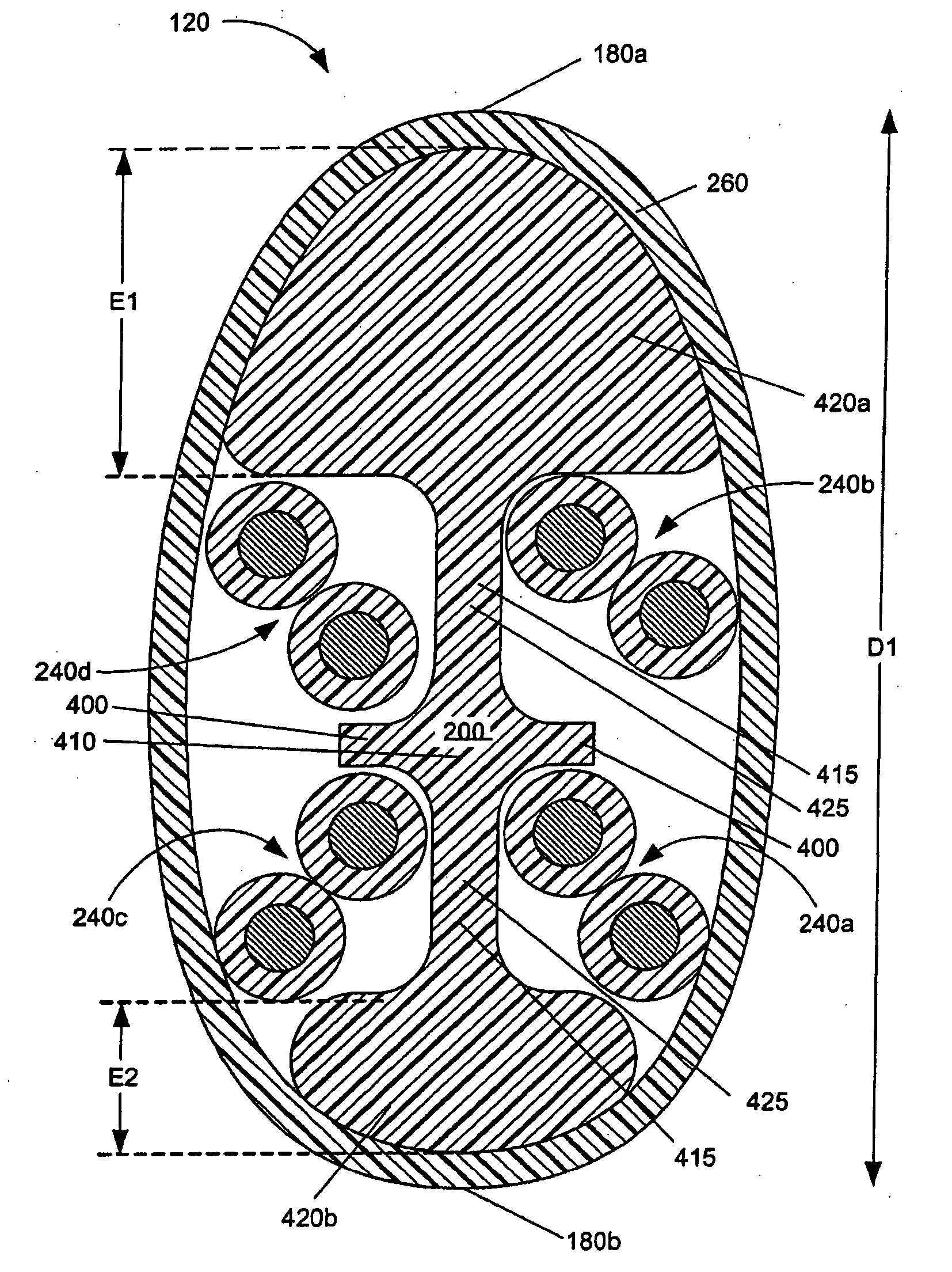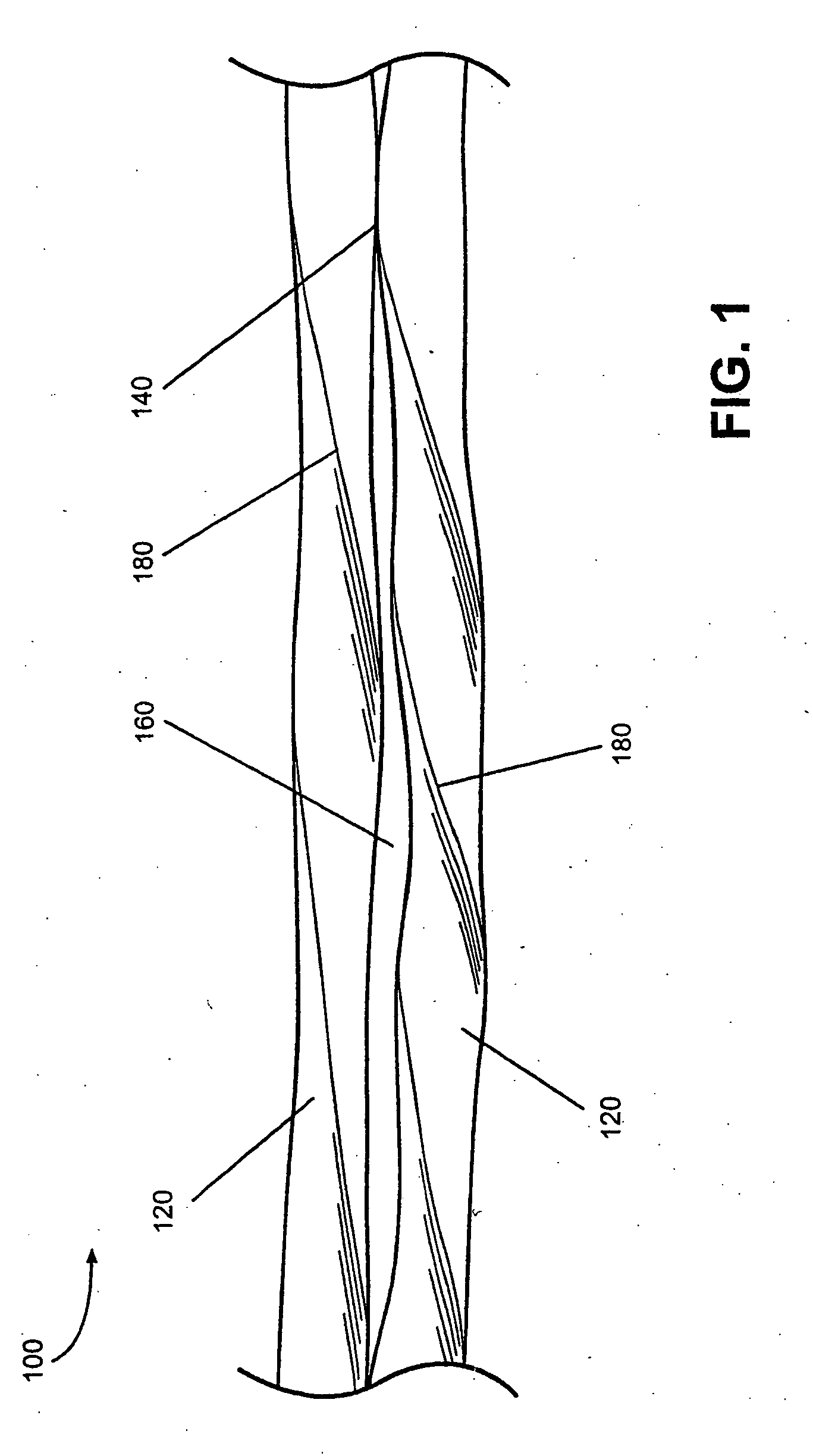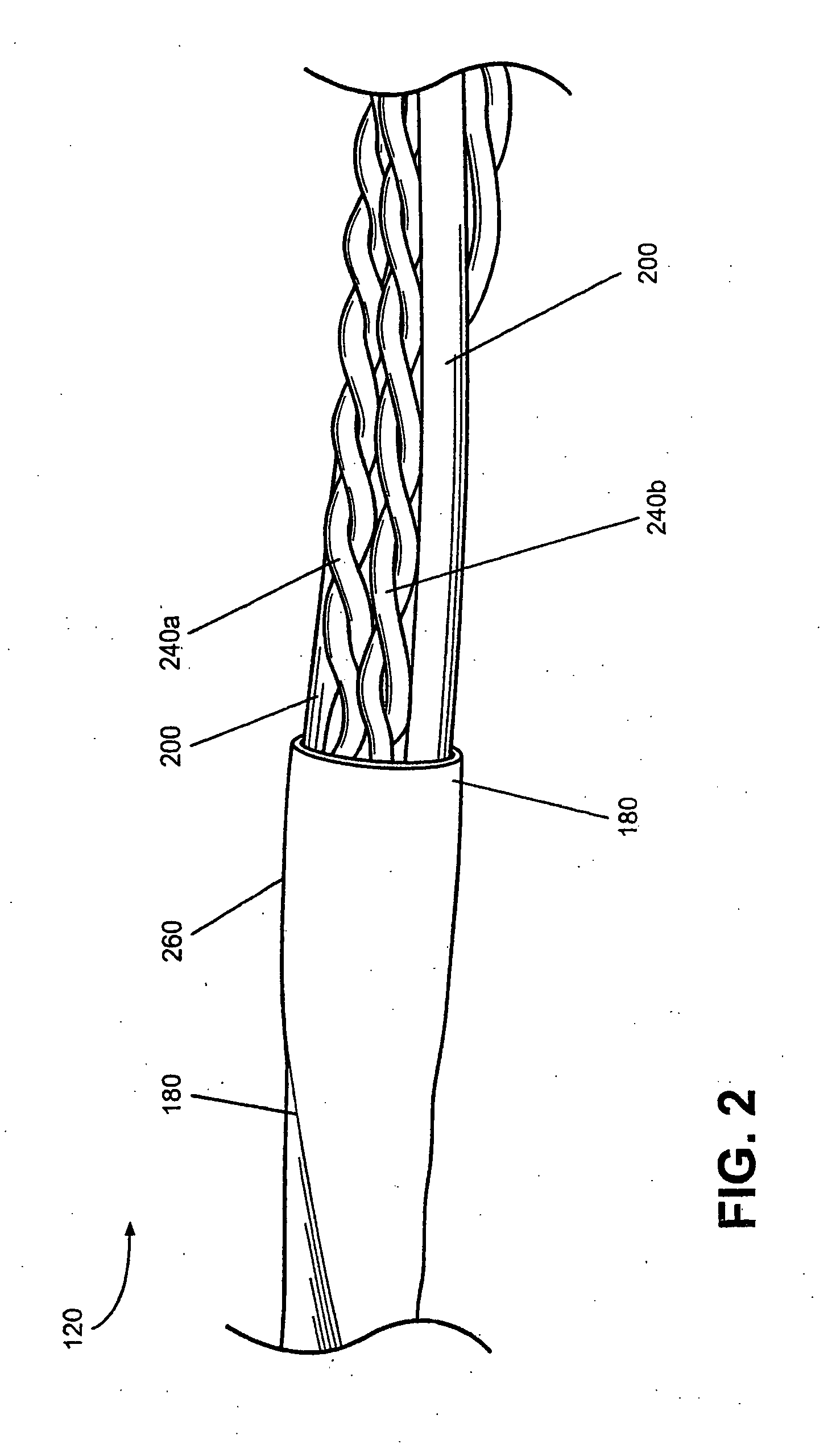Cable with offset filler
a filler and cable technology, applied in the direction of cables, insulated conductors, conductors, etc., can solve the problems of limiting the speed of data flow between communications devices, signal becomes more sensitive to undesirable influences from cables, and the integrity of signals is jeopardized, so as to achieve efficient and accurate propagation of high-speed data signals
- Summary
- Abstract
- Description
- Claims
- Application Information
AI Technical Summary
Benefits of technology
Problems solved by technology
Method used
Image
Examples
embodiment 240
[0071]FIG. 3 is a perspective view of one of the twisted pairs 240. As shown in FIG. 3, the cabled embodiment 240 includes two conductors 300 individually insulated by insulators 320 (also referred to as “insulation 320”). One conductor 300 and its surrounding insulator 320 are helically twisted together with the other conductor 300 and insulator 320 down a longitudinal axis. FIG. 3 further indicates the diameter (d) and the lay length (L) of the twisted pair 240. In some embodiments, the twisted pair 240 is shielded.
[0072] The twisted pair 240 can be twisted at various lay lengths. In some embodiments, the twisted pair's 240 conductors 300 are twisted generally longitudinally down said axis at a specific lay length (L). In some embodiments, the lay length (L) of the twisted pair 240 varies over a portion or all of the longitudinal distance of the twisted pair 240, which distance may be a predefined distance or length. By way of example only, in some embodiments, the predefined dist...
first embodiment
[0077]FIG. 4A shows an enlarged cross-sectional view of the cable 120 according to the invention. As shown in FIG. 4A, the jacket 260 surrounds the filler 200 and the twisted pairs 240a, 240b, 240c, 240d (collectively “the twisted pairs 240”) to form the cable 120. The twisted pairs 240a, 240b, 240c, 240d can be distinguished by having dissimilar lay lengths. While the twisted pairs 240a, 240b, 240c, 240d may have dissimilar lay lengths, they should be twisted in the same direction in order to minimize impedance mismatches, either all twisted pairs 240 having a right-hand twist or a left-hand twist. The lay lengths of the twisted pairs 240b, 240d are preferably similar, and the lay lengths of the twisted pairs 240a, 240c are preferably similar. In some embodiments, the lay lengths of the twisted pairs 240a, 240c are less than the lay lengths of the twisted pairs 240b, 240d. In such embodiments, the twisted pairs 240a, 240c can be referred to as the shorter lay length twisted pairs 2...
second embodiment
[0092] To illustrate examples of other embodiments of the cable 120, FIGS. 4B-4C show various different embodiments of the cable 120. FIG. 4B shows an enlarged cross-sectional view of a cable 120′ according to a The cable 120′ shown in FIG. 4B includes a filler 200′ that includes three legs 415 and three filler extensions 420 extending away from the legs 415 and beyond the cross-sectional areas of the twisted pairs 240. Each of the legs 415 includes the reference point 415. The filler 200′ can function in any of the ways discussed above in relation to the filler 200, including helping to distance adjacently positioned cables 120′ from one another.
PUM
| Property | Measurement | Unit |
|---|---|---|
| impedance | aaaaa | aaaaa |
| frequency | aaaaa | aaaaa |
| distance | aaaaa | aaaaa |
Abstract
Description
Claims
Application Information
 Login to View More
Login to View More - R&D
- Intellectual Property
- Life Sciences
- Materials
- Tech Scout
- Unparalleled Data Quality
- Higher Quality Content
- 60% Fewer Hallucinations
Browse by: Latest US Patents, China's latest patents, Technical Efficacy Thesaurus, Application Domain, Technology Topic, Popular Technical Reports.
© 2025 PatSnap. All rights reserved.Legal|Privacy policy|Modern Slavery Act Transparency Statement|Sitemap|About US| Contact US: help@patsnap.com



